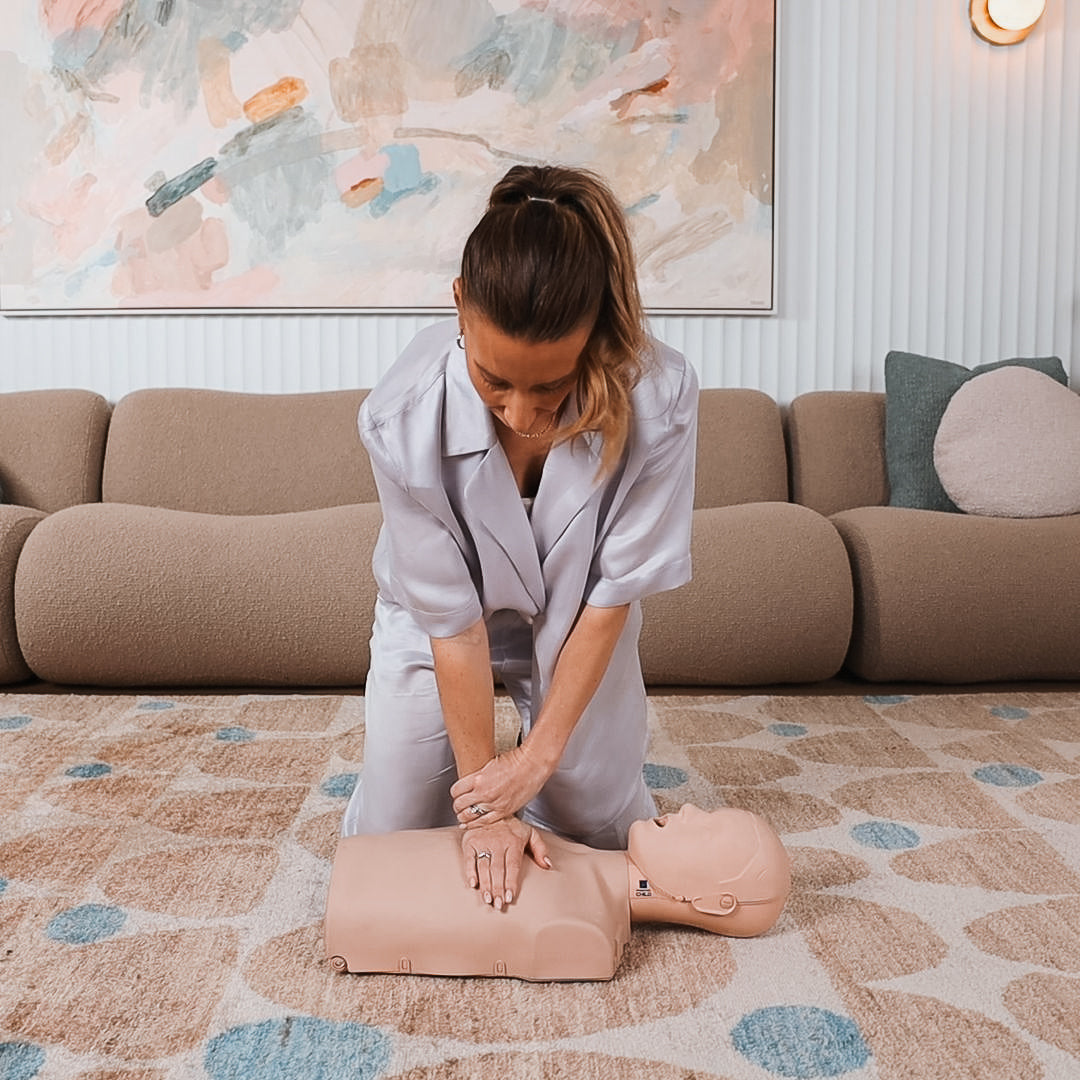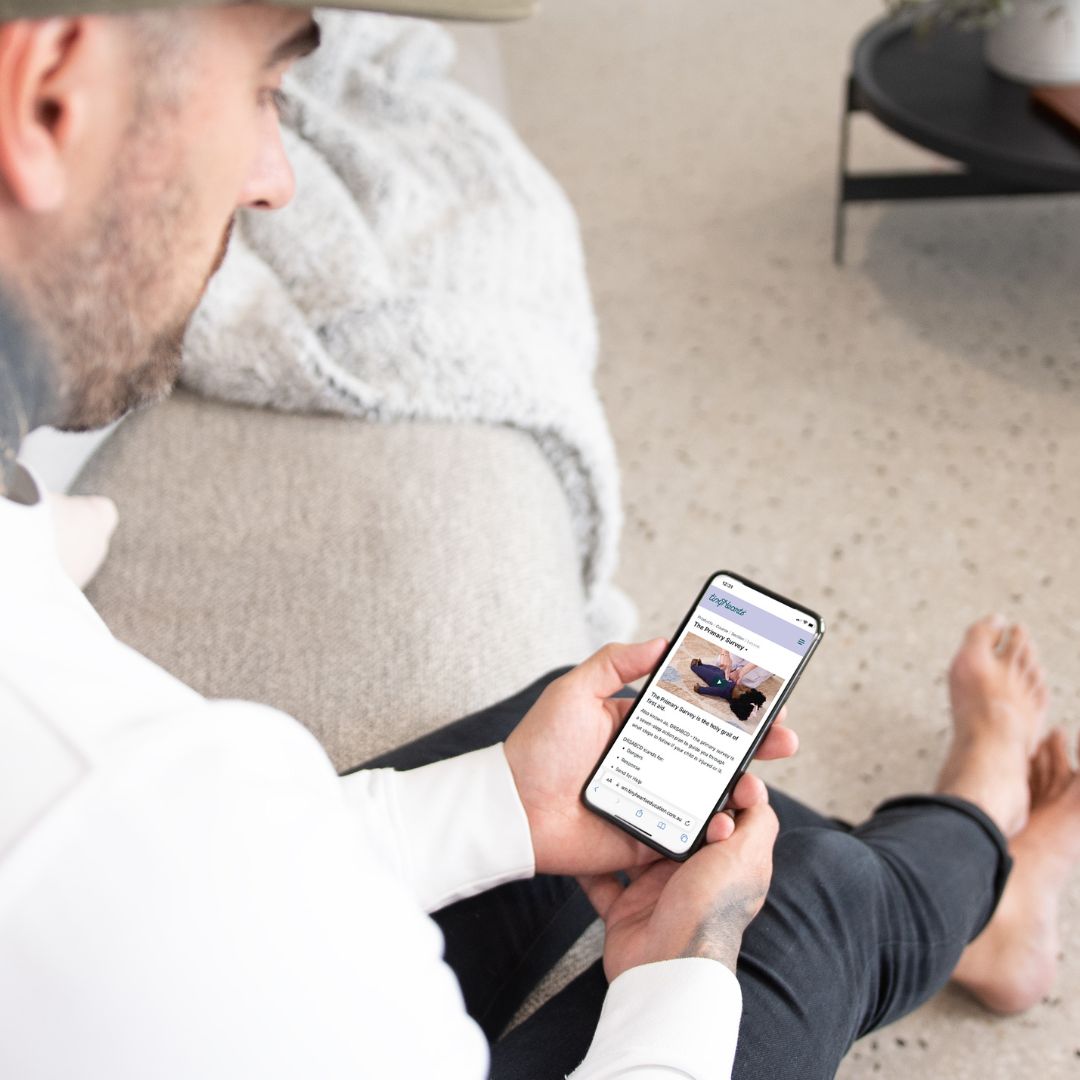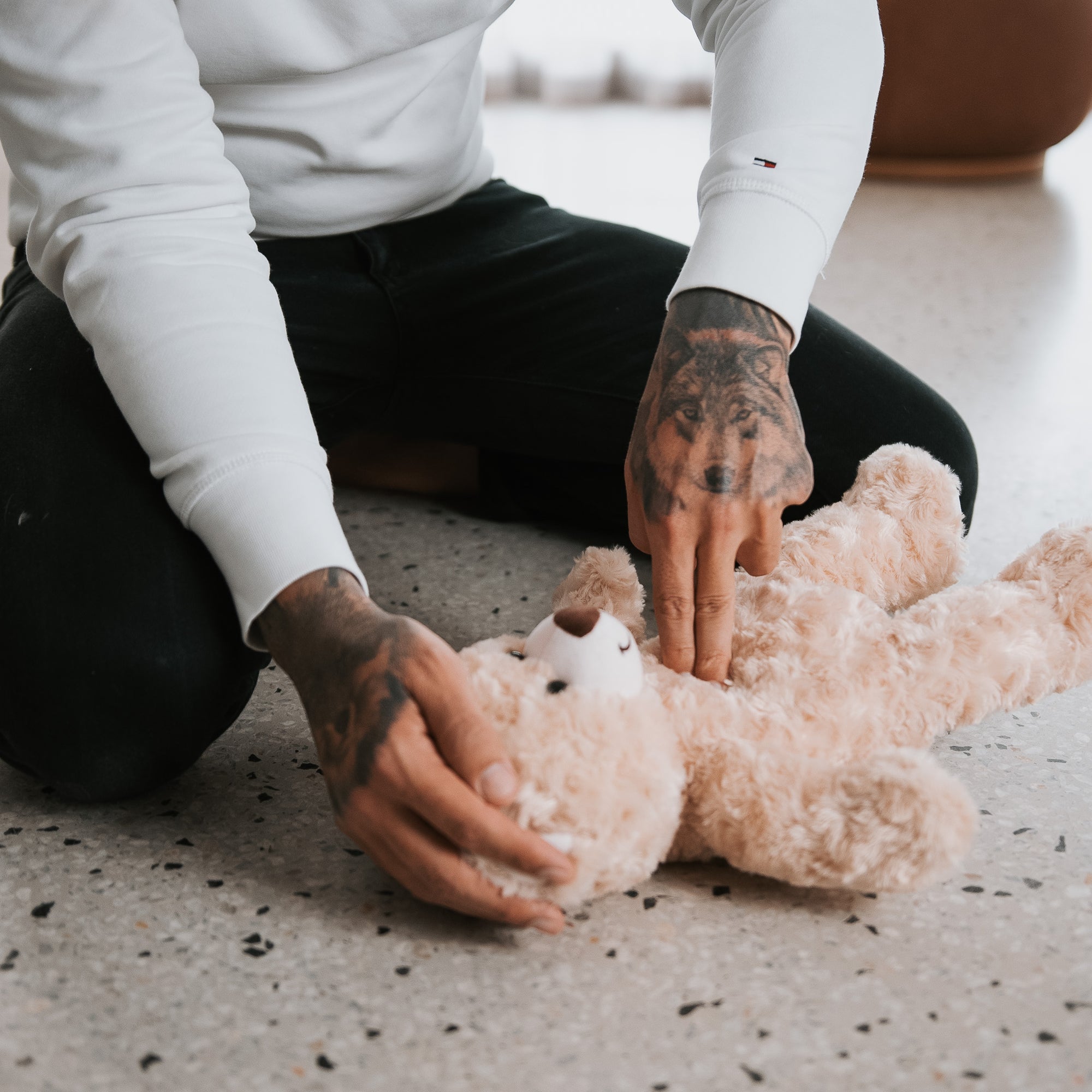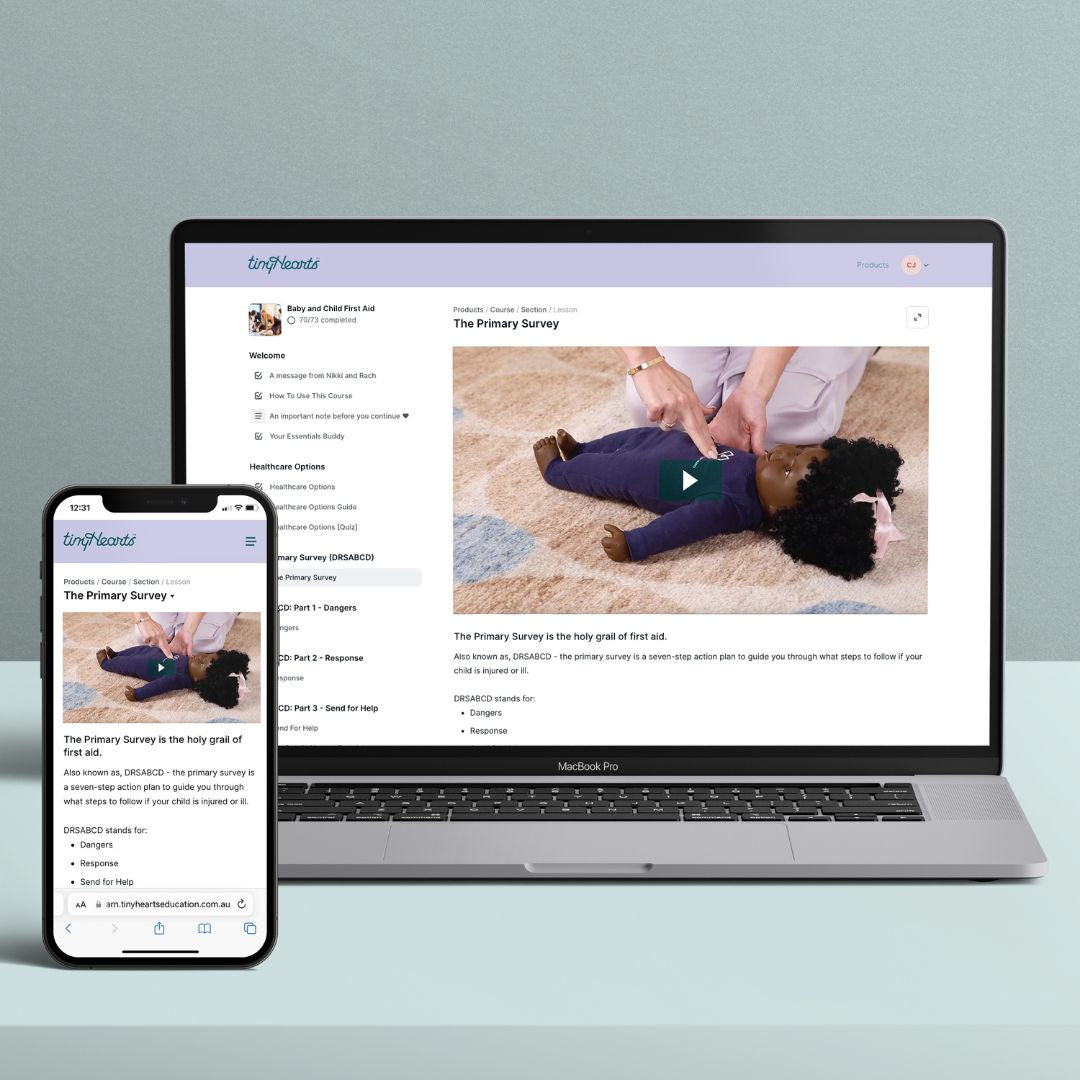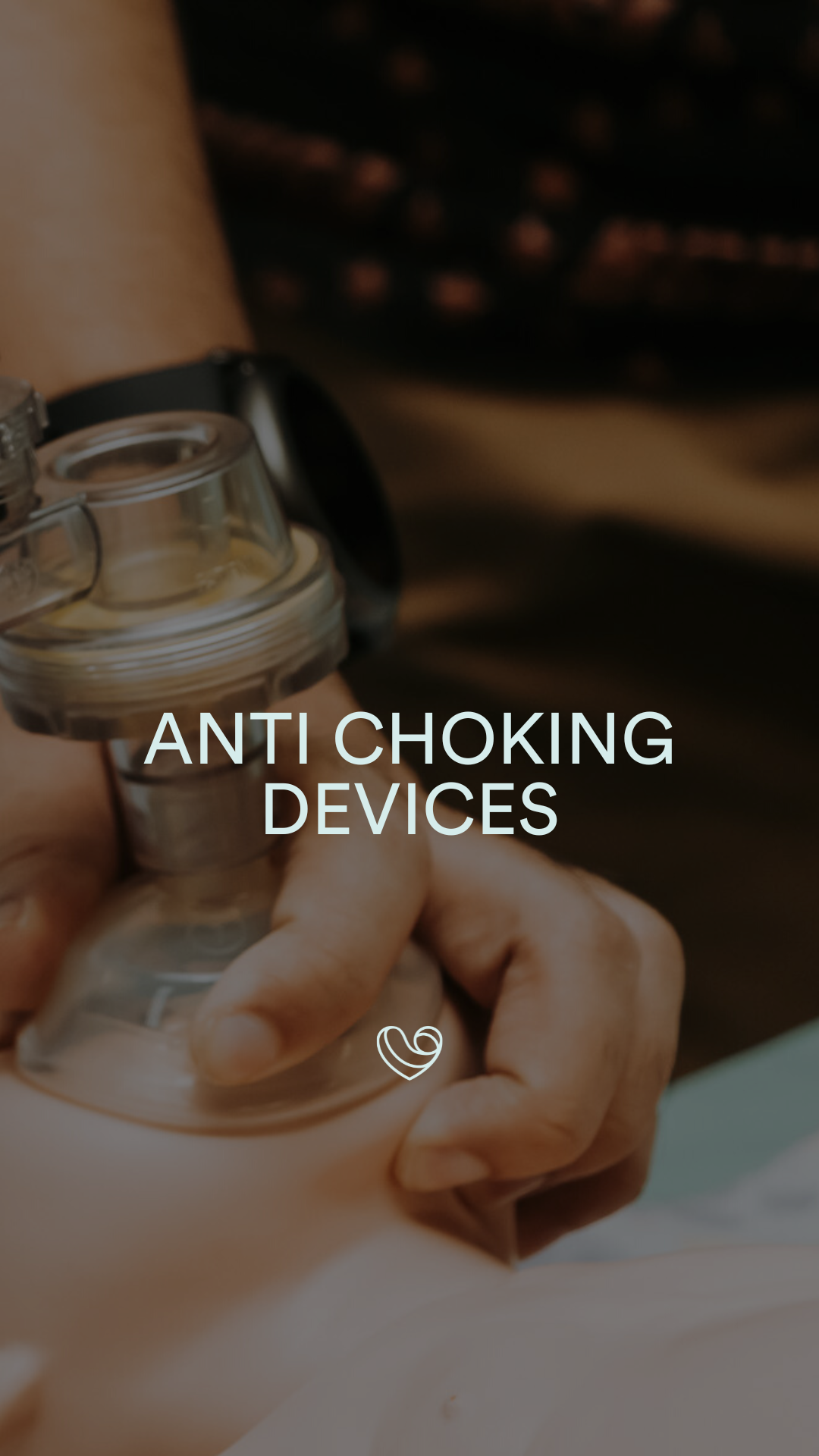

· By Tiny Hearts Education
Anti-Choking Devices - Should you get one?
I wanted to test the lifevac as I get so many questions every day asking my opinion. Well, I did just that today. I have some reservations and concerns and I will share those with you all so you can make your own conclusion.
So my first question to you is have you noticed more ads for anti-choking devices on your social feeds? Often these ads will come with footage of the device being used to save the child's life. Firstly, my heart goes out to these parents in the videos. It is terrifying to witness your child choking, and I'm sharing my thoughts not to criticise but as a learning opportunity for others.
In all of these videos where the device is being used, not once have I seen the correct first aid treatment being used first with the right location, technique and pressure. Do I think if the correct treatment had been done, it would have worked and avoided the need for the device? I'd say there is a high chance. Back blows and chest thrusts are very effective. I know this because we’ve been teaching this skill and saving little lives with it for 10 years.
These devices will never replace the first-line treatment for choking, even the companies that sell these devices also state that the recommended choking treatments MUST be used first. Remember "5 to stay alive." If you do this correctly, as you've been trained and without delay, there is a very good chance you'll dislodge and clear the airway without the need for a device.
We looked up the available research on the device to share with you to help you decide whether it is suitable for you and your family.
What is it?
An anti-choking device is designed to remove upper airway obstructions by suction after other first-aid measures fail.
How does it work?
It is intended to be used when there is something blocking the airways. The mask is placed on the person's face. The plunger is pushed down, and air goes out the sides of the device. The device has a one-way suction valve that removes objects/food in the event of choking.
Lifevac states that the pressure generated is over 300 mmHg of suction (roughly the same amount as suction from a breast pump). The website also reports that the duration of suction is minimal. A study found that such devices could create peak airway pressures 8-10 times those of standard chest compressions and abdominal thrusts (Van de Voorde, 2020).
Who can it be used on?
Lifevac states the device can be used on anyone above 22 pounds (10kg). There is no information on why you cant use this device below this weight range.
Does Lifevac have TGA approval?
TGA approval is Australia's government authority responsible for evaluating, assessing and monitoring products defined as "therapeutic goods." Therapeutic goods are basically things like medicines and medical devices. The Lifevac is on the Australian Register of Therapeutic Goods under class 1. The classing of medical devices is based on what the item is intended to be used for and if it could cause risk if the item produces an incorrect result. The higher the potential risk of an incorrect result, the higher the classification. Being placed into this category means the TGA determined the LifeVac to be of "no public health risk or low personal risk."
We reached out to the TGA for a comment on classifying this item as a low-risk item. The TGA has forwarded our enquiry to the post-market team for review to respond, but at the time of writing this blog post, they have not gotten back to us yet.
We also reached out to the Australian Resuscitation Council about their views on the safety and efficacy of the Lifevac. They replied with this statement:
"Unfortunately, we do not have the information you are requesting. The ARC (ANZCOR) does not endorse, recommend or comment on any particular devices."
What does the research say about airway clearance devices?
At the moment, there isn't a lot of high-quality research available about the safety and usefulness of these devices. And the ones that are available are done by the manufacturers themselves. There is currently a phase one study on these devices that was published in March 2022. The phase 1 study shows that airway clearance devices could be a promising treatment for choking. However, this study isn't "perfect", which means we can't take the results of this study and make recommendations from them. For example, the information collected in this study was done by the creators of these devices, recruiting their own participants to complete the survey. This means the results collected from the survey might not be a realistic or accurate representation of all the results of these devices. This study looked at any negative outcomes from using these devices and found that three adverse events were reported. These were: disconnection of the mask during intervention (Lifevac), cut to the lip (dechoker), and a tooth removed from the socket (dechoker).
There currently needs to be more studies and research on these products for a strong recommendation to be made to either encourage or discourage their use.
Does it work?
I used the device to dislodge a grape in an airway. I tested the device and it did remove the grape, but so did the back blows I also performed in another test. This left me unconvinced that it was superior to back blows as the same result was achieved, the back blows took less time.
A study looked at how successful these devices are at removing obstructions. The Lifevac was found to have a dislodgement success rate of 94.3% on the first attempt. However, the study mentioned that a lot of the data could be biased. The study encouraged the public to follow local guidelines that align with ILCOR recommendations (International Liaison Committee on Resuscitation).
What is the current choking treatment recommendation by these peak bodies?
The Australian organisation under ILCOR is the Australian and New Zealand Committee on Resuscitation (ANZCOR). The ANZCOR gathers and collates scientific information regarding resuscitation techniques and puts forward the recommended guidelines for the public to follow. They are considered the peak body for resuscitation guidelines.
The current recommendations for severe airway obstruction if the person is responsive is to:
1) Send for help - call an ambulance
2) Give 5 back blows
3) Give 5 chest thrusts
If the person is unresponsive, the recommendation is to:
1) Send for help - call an ambulance
2) Start CPR
So, do I recommend the device?
I am worried that people will think this device is the quick answer to dealing with choking but as per manufacturers and all peak body instructions - it does not replace first line treatment of choking, which is back blows and chest thrusts. . I worry people will purchase and won’t learn the correct choking treatment that should be done first, the one thats effective and comes with little risks to the person recieving the treatment. I am also worried that by buying this product and not learning first aid, people won’t know how to perform CPR if the device doesnt work and CPR is needed. My main point I want to make clear is that this device or devices alike will never replace the first aid choking treatment.
As more research arises, I will update you with any changes to these recommendations. The bottom line is if you can afford both first aid training and an anti-choking device, and you feel comfortable getting a product that hasn't been approved by the peak resuscitation bodies yet, then by all means, keep one handy in your home.
But one thing is for sure, a device does not and should not replace knowing choking first aid treatment. We may not always have a device readily available to us, but what we will always have, is the knowledge and empowerment on first aid treatments that we have learnt.
At the time of writing this blog, there isn't enough evidence for me to strongly recommend or discourage you from getting this product. I will continue to look at the research and share any updates with you all. If I reach a point where I think this device is something that parents should have, you can absolutely bet that I will create one for you. Until that time, my advice is to ensure you make getting trained in First aid a priority.
If you want to learn first aid specifically designed for parents, the Tiny Hearts First Aid course teaches techniques that align with recommendations from ILCOR and ANZCOR.
The Tiny Hearts First Aid course is the perfect way to empower parents who are anxious about choking. It covers:
1) Choking Prevention
2) How to safely prepare foods to minimise choking risk
3) Recognising a mild obstruction versus a severe obstruction
4) Gagging and choking
3) First aid treatment for choking (includes a downloadable handbook)
4) Video demonstration of choking first aid
References and additional sources for you to check out:
2) A 'foreign body' in the 'foreign body airway obstruction' algorithm
To the extent permitted by law, Tiny Hearts excludes any liability, including any liability for negligence, for any loss, including indirect or consequential damages arising from or in relation to the use of this blog content.
This blog may include material from third party authors or suppliers. Tiny Hearts is not responsible for examining or evaluating the content or accuracy of the third-party material and it does not warrant and, to the fullest extent permitted by law, will not have any liability or responsibility for any third-party material. This blog was written for informational purposes only and is not a substitute for professional medical advice. Nothing contained in this blog should be construed as medical advice or diagnosis.The content on our blog should not be interpreted as a substitute for physician consultation, evaluation, or treatment. Do not disregard the advice of a medical professional or delay seeking attention based on the content of this blog. If you believe someone needs medical assistance, do not delay seeking it. In case of emergency, contact your doctor, visit the nearest emergency department, or call Triple Zero (000) immediately.
The author of this information has made a considerable effort to ensure the information is in-line with current guidelines, codes and accepted clinical evidence at time of writing, is up-to-date at time of publication and relevant to Australian readers.
Would you know what to do in a first aid emergency with your little one?
What can make the biggest difference in an emergency is what you, as a parent, do BEFORE the ambulance arrives. Knowing what to look for, when to treat at home or when to escalate can be the difference between life and death.
Created by first responders, this course is designed to provide you with reassurance and confidence to provide care to your child when they need it most.
As parents ourselves, we understand finding the time to learn first aid can be tricky! We've created this online course so you can learn from your device at home. Purchase now and learn first aid right away, at the pace that suits you.
Our online course covers CPR, choking, allergies and much more. Follow and practice along with our expert educators and co-founders of Tiny Hearts through several scenarios to reinforce your knowledge and feel confident and ready for any first aid emergency with your little one.

